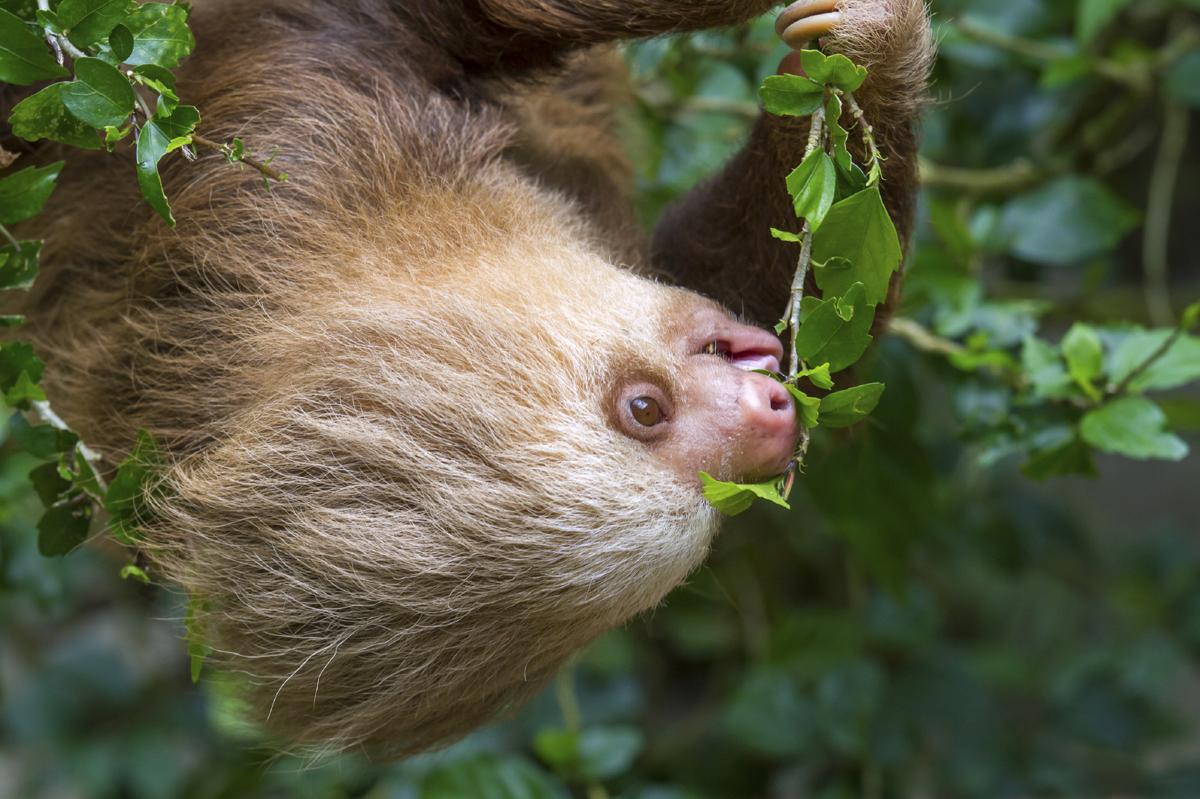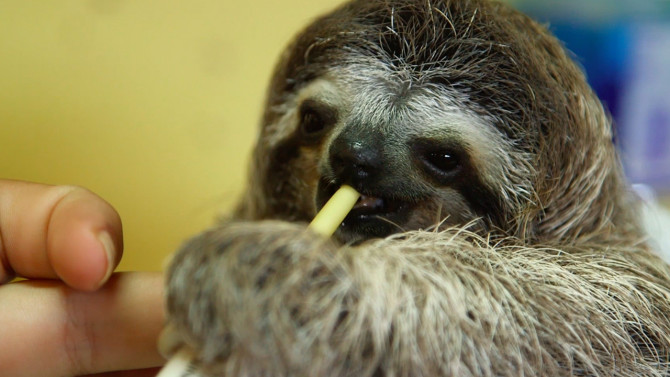A Sloths Diet 3,6/5 3818 reviews

Sloth Animal Facts
- Because sloths only eat leaves from a few trees, their diet is very low in nutrition. Therefore, they can't expend a lot of energy to regulate their body temperature.
- Although sloths have an omnivorous diet and eat both plants and animals, the majority of the sloth's diet is made of leaves. Leaves contain very little energy and nutrition so the sloth has adapted to have a large and complex digestive system in order for the leaves to pass through the sloth effectively.

The main components of a sloth diet are leaves, fruit, tree shoots and buds. This type of food is difficult to digest and doesn’t contain much energy, which is why the sloth has evolved several characteristics — such as a slow metabolism and a large stomach — to help it survive. Sloths also have been known to eat small animals and birds but can survive without this protein supplement to their diet.
The sloth is a very slow animal that is unable to consume large amounts of food. A sloth may stay in a single tree for more than a year and sleep for up to 18 hours each day, which considerably limits the food available. To compensate for this, a sloth has a very slow metabolism and maintains a low body temperature of between 86° Fahrenheit and 93° Fahrenheit (approximately 30° Celsius to 34° Celsius). This means the animal doesn’t need to eat much food to survive.

What do sloths eat? Sloths are herbivores. A sloth’s main food is the various leaves and fruits that grow right under their noses. What Animals Eat Sloths? Sloths may become the prey for various predators of South America, primarily for the anaconda, cougar, jaguar, and panther.
The bulk of a sloth diet is made up of leaves, shoots and buds of trees, which the animals usually eat at night. Sloths also eat the fruit from trees when it’s available. The animals don’t need to be near a water supply, because they receive nearly all of their necessary water from fruit and leaves. In science, the sloth diet is classified as folivore, which is an herbivore that mainly eats leaves. The sloth diet of leaves and other parts of trees means it can live very efficiently in rainforests, where this food is in abundant supply.
There have been some reports of certain types of sloth eating insects and other small animals, including birds. These sloths still have a diet that mainly consists of plants, so this only makes up a tiny portion of the sloth’s total food intake. In recent years, some species of sloths also have been seen eating feces from human latrines.
A Sloths Diet


A Sloths Diet
Leaves, which are a major part of the sloth diet, don’t provide much nutritional value and aren’t easy to digest. For this reason, sloths have evolved large stomachs that are highly suited to breaking down leaves. It is estimated that it can take a sloth up to a month to fully digest the food it’s eaten, which is achieved through a specialized type of bacteria that is present in the sloth’s gut. At any one time, up to two-thirds of a sloth’s body weight may be made up of the food it’s carrying in its stomach.